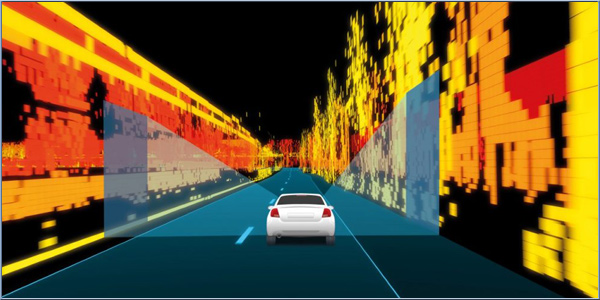|
|
 |
 |
 |
 |
TomTom sees future in autonomous vehicles
Article by: Darren Griffin
Date: 13 Apr 2018

Despite the endless news coverage, self-driving cars are not going to be an everyday sight on our streets just yet. There’s a long way to go in developing the technology required and TomTom is investing heavily in developing the high definition maps that these vehicles will require.
As personal navigation device sales continue to decline, TomTom is looking to place itself at the core of autonomous vehicles and its background in map data gives it a head start albeit facing stiff competition from HERE and Google.
TomTom's concept is RoadDNA. This innovation provides precise lateral and longitudinal positioning using LIDAR data to efficiently determine a vehicles position
Trucks equipped with software and maps from TomTom that will automatically adjust speed when they approach a curve or hill climb are expected later this year. Initially aimed at reducing fuel consumption, the technology will form part of that required for self-driving vehicles in the future, where that will be.
Source: www.tomtom.com
| Comments
|
 Posted by arfurdent on Fri Apr 13, 2018 7:43 am Posted by arfurdent on Fri Apr 13, 2018 7:43 am |
 |
"As personal navigation device sales continue to decline"
Is that suprising given the gutting of features on the latest Tomtom PNDs?
|
|
 Posted by hpyatt on Fri Apr 13, 2018 8:20 pm Posted by hpyatt on Fri Apr 13, 2018 8:20 pm |
 |
The problem won't be the resolution of the map, more the priority rights at every point where two vehicle meet. It's not the road junctions, they are easy to prioritise, but every driveway onto a road, carparking space, country single track road etc etc. An old solution is "Priorite a Gauche". But the constant stop-start will soon have everyone reaching for the self-control button so that they can bludgeon past every contact point. The safety requirement of avoiding physical contact with man or machine will naturally force every autonomous car to slow down to snails-pace. Just like the dawn of house robots on Tomorrows World 40 years ago, the hype is far greater than reality. We'll never see it.
|
|
|
|
 |
|
|
 |
 |
 |
 |
|
|